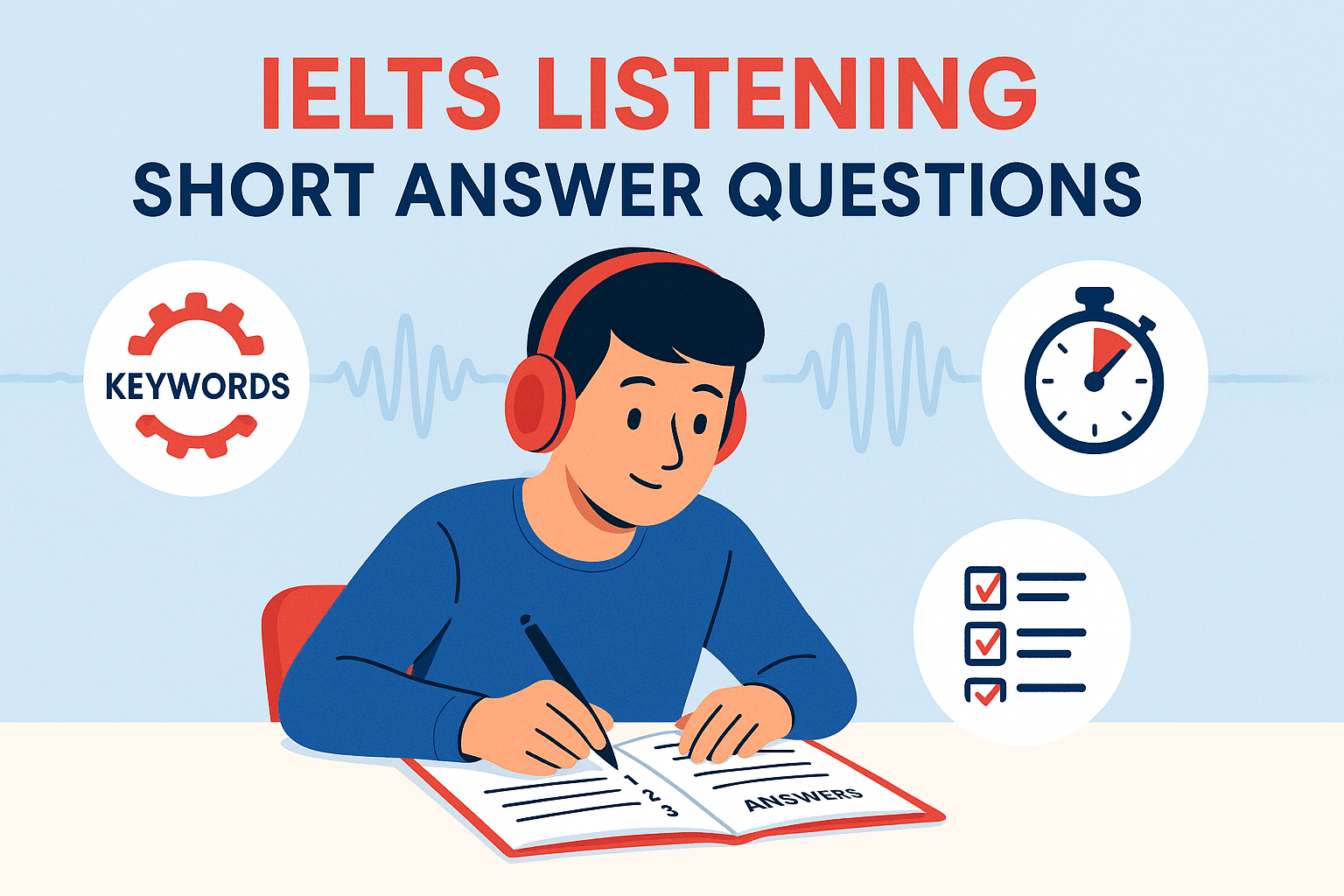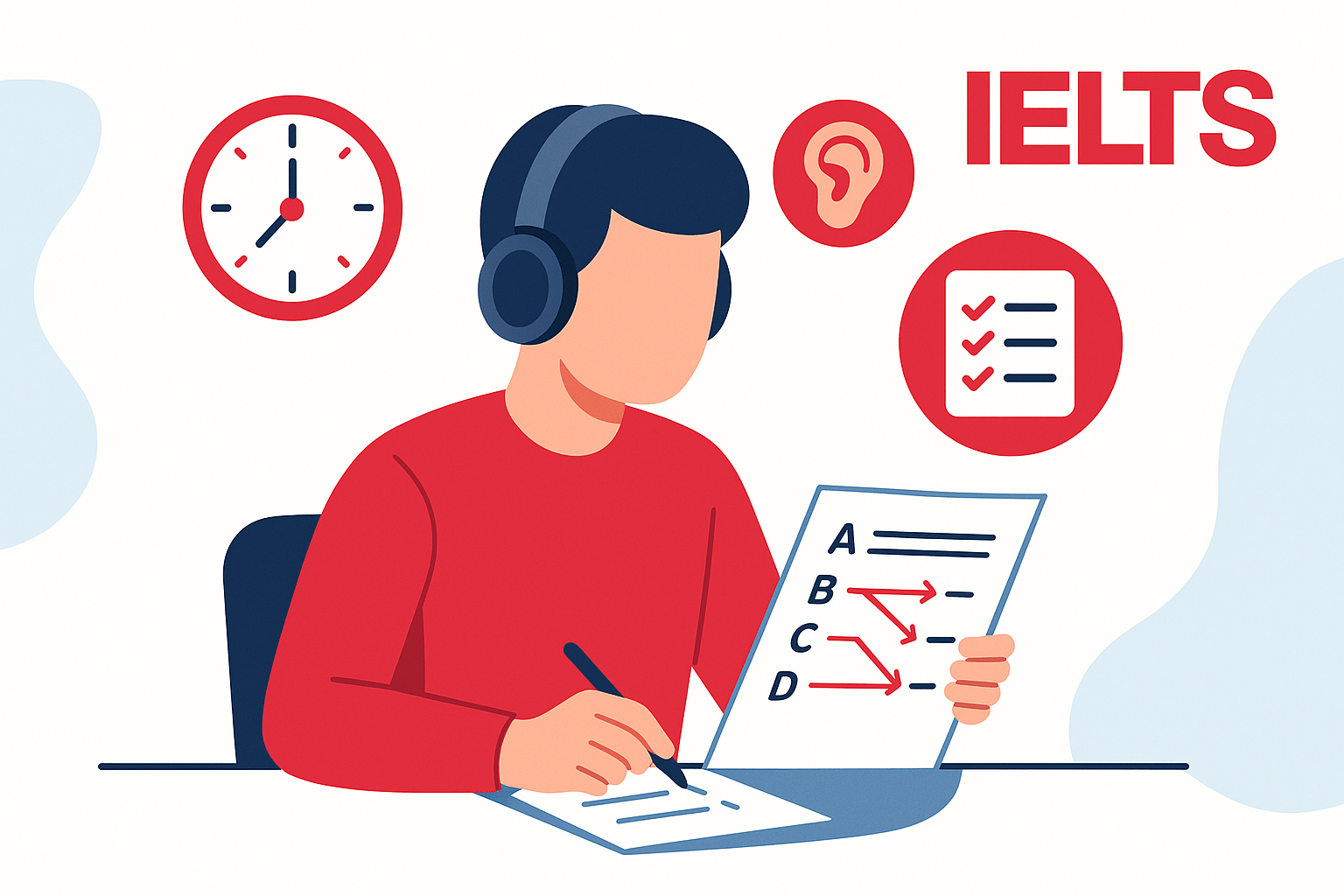- Why Note-Taking Can Make or Break Your Listening Score
- What Makes IELTS Listening Unique?
- My Most Effective Note-Taking Techniques for IELTS Listening
- When to Take Notes — And When Not To
- Practice Makes It Permanent
- Final Thoughts: Smart Notes = Higher Scores
- FAQs: Note-Taking Techniques for IELTS Listening
As an international IELTS teacher helping students across the world, I often get asked the same question: “How do I keep up with the audio without missing key information?” The answer lies in mastering note-taking techniques for IELTS Listening. These strategies aren’t just about writing fast — they’re about capturing the right information efficiently, so you stay focused and accurate throughout the test.
Why Note-Taking Can Make or Break Your Listening Score
Many of my students struggle with information overload during the IELTS Listening test. One learner, Ahmed from Egypt, told me he would lose track after a few sentences because he was trying to write everything down. Others, like Mei from Vietnam, admitted they didn’t write anything and hoped to remember it all — which rarely worked.
The key is balance. Note-taking techniques for IELTS Listening help you filter out the noise and focus on what matters. Done right, they can boost both your comprehension and your band score.
If you’re aiming for a Band 7–9, note-taking isn’t optional — it’s essential.
What Makes IELTS Listening Unique?
Before we dive into techniques, let’s clarify something important. IELTS Listening is not a memory test — it’s a meaning test. You’re listening for specific information, and the test is designed to distract you with extra details. That’s why smart note-taking makes all the difference.
To understand the full test layout and scoring system, I recommend reviewing this IELTS Listening Band Score Guide. It’s a solid foundation before developing advanced strategies like note-taking.
My Most Effective Note-Taking Techniques for IELTS Listening
Let’s walk through the note-taking techniques I teach my own IELTS students, especially in our premium Courseline IELTS courses.
1. Abbreviations Save Time and Space
Write less, capture more. Learn to abbreviate common words:
- Info = Information
- Dev = Development
- Govt = Government
- Temp = Temperature
You don’t need perfect spelling — only you will read your notes.
2. Use Arrows to Show Connections
Arrows help connect ideas quickly:
- Cause → Effect
- Step 1 → Step 2
- A leads to B
One student from Bangladesh improved his accuracy dramatically after learning to link ideas with arrows instead of full sentences.
3. Symbols Are Your Secret Weapon
Use simple symbols to replace entire words:
- ✔ for correct
- ✘ for wrong
- ↑ for increase
- £ for money
This keeps your notes visual and quick to process.
4. Focus on Keywords, Not Sentences
You don’t need to transcribe what you hear. Just grab keywords — nouns, verbs, and numbers.
For example:
“The number of tourists rose sharply in 2020”
➡️ tourists ↑ 2020
This works especially well when practising with official IELTS Listening tests.
When to Take Notes — And When Not To
Here’s a tip most students miss: You don’t need to take notes for every question. Sometimes, the answer is obvious and doesn’t require any note-taking. Other times, especially with multiple-choice or map labelling questions, notes can help you stay on track.
You’ll learn how to make those decisions instinctively with practice. That’s why I always advise using authentic resources from IELTS.org and British Council to develop this judgment.
Practice Makes It Permanent
No matter how good your note-taking strategies are, they only become useful with regular use. When you practise, try this:
- Listen to a section once.
- Take notes using your system.
- Pause and review — did your notes help you answer the questions correctly?
If not, tweak your technique. Practice and reflection are what helped my student Lara from Brazil move from Band 6.5 to Band 8.0 in just two months.
To support this process, explore these practical listening strategies and skills designed specifically for Band 7–9 learners.
Final Thoughts: Smart Notes = Higher Scores
Mastering note-taking techniques for IELTS Listening gives you more than just a better memory — it gives you control. With strong notes, you won’t panic when the audio speeds up or throws in a paraphrase. Instead, you’ll listen with confidence, knowing you’re ready to catch every important detail.
Whether you’re just starting your IELTS journey or fine-tuning your test-day techniques, note-taking is one of the smartest skills you can build.
FAQs: Note-Taking Techniques for IELTS Listening
Q1: Should I take notes during every part of the IELTS Listening test?
A: Not necessarily. Take notes when the information is complex, like in multiple-choice or map labelling tasks. For short answer questions, notes may not be needed.
Q2: What if I can’t write fast enough?
A: That’s why abbreviations and symbols are so useful. Practise shortening words and using icons like ↑, ↓, or £ to save time.
Q3: Will note-taking distract me from listening?
A: It can — if you’re writing too much. The goal is to write less while capturing more meaning. With practice, it becomes second nature.
Q4: How do I practise note-taking for IELTS?
A: Use authentic materials from IELTS IDP or try free IELTS Listening practice tests to build your speed and accuracy.
Q5: Do examiners check my notes?
A: No. Your notes are just for you. The answers you write on the answer sheet are what counts.





One Response
I am perpetually thought about this, appreciate it for posting.